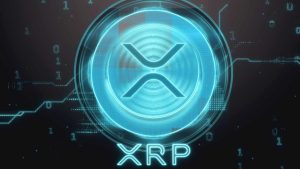Ex-Microsoft MD Talks Web3 Development Following Move to NEO

John deVadoss spent almost two decades at the pinnacle of Microsoft as a Managing Director. From 1998 to 2016, John was instrumental in building .NET, Microsoft Digital, Azure, and Visual Studio Tools, among others. Now he builds for Web3 Developers.
He is currently Head of Development at Neo (NEO), an open-source blockchain that at one point was widely known as the “Chinese Ethereum.” Founded as Antshares in 2014, it is believed to be the first-ever public blockchain in China and the first chain to adopt a dual token model and a BFT-style consensus process.
So why did a former Managing Director of Microsoft decide to pack his bags and leave for Web3? For John, it was the slow realization that the current power-hungry model of the internet had fatal flaws. “There had to be something different than what the big players were espousing, evangelizing, and controlling with the so-called Web2 stacks.”
Another motivator was the recognition that decentralization had become a red herring and a buzzword with little connection to reality. In his mind, what truly mattered was “self-sovereignty”. A concept that can be traced from early democracy in Ancient Greece, through the work of English philosopher John Locke and the Bill of Rights, and all the way to contemporary debates around abortions and vaccines. “That is really what drove me to want to build in the Web3 space,” he says. “And certainly, to contribute my previous experiences, having worked on and built significant parts of what is called Web1 and, unfortunately, what is also called Web2.”
Putting Web3 Developers First
For the past few years, Neo has focused on building an interoperable dApp ecosystem supported by a thriving worldwide community of developers. It boasts of being the most feature-rich platform for building dApps. To get to that promised land, John insists that projects must put developers first.
“[There] has to be a fair, reasonable balance between these platforms and the people that create value for the platform,” he states. “Developers are coming to the growing realization that the walled gardens they were contributing to were not in the best interest of the users or even the developers themselves.”
“There are possibly 22 million professional developers out there, and there are many, many more millions who program part-time. And seeing that there was a complete lack of what you might call a professional developer experience.”
As a key example of Neo’s commitment to better builder experiences, John cites his team’s creation of the industry’s first smart contract debugger — a fundamental part of the developer toolkit. “We said, look, hang on a second. This is not working. Our goal, starting then, is to build a professional development experience, with a toolset and a dev platform that is comparable to, if not superior to, that offered by the likes of Amazon Web Services and Microsoft Azure.”
“These Are Not Your Father’s Applications”
Despite building those tools, and continually making the case for his new industry, John tells BeInCrypto that he still encounters skepticism from the developer community about building in Web3. This particular vision of the future of the internet isn’t shared by everyone. Some of that skepticism is because of how differently blockchains operate.
“If you look at the history of computer science, the history of computing and computing platforms going back to Alan Turing himself… it’s all plumbing,” he explains. “Blockchain platforms are unique in the history of computer science and unique in the history of computing platforms because blockchains are not passive plumbing. It’s almost the closest you can get to a modern-day perpetual machine.”
He explains how, for traditional developers, the notion of economic platforms that include crypto-economic protocols, incentives, and penalties, into the underlying stack, is still very much an alien concept. “It takes time to be able to understand and comprehend [it], let alone to be able to exploit it, to use it to build to create value.”
John and Neo’s desire to focus on the developer experience looks well-founded. Despite the recent market downturn, there is more interest in developing in Web3 than ever before, according to a report by Alchemy. Judging by downloads of two key Web3 libraries — Ether.js and Web3.js — activity has increased three-fold since Q3 of last year and by ten-fold since 2018.
In September, over 17,376 smart contracts were submitted to Etherscan, a popular block explorer, up 160% year-on-year, indicating an increase in interest in decentralized protocols.
Learning Lessons From Microsoft
From conversations with many of John’s colleagues at Neo, it is clear his eighteen years at Microsoft certainly benefit their project. Within a few moments of asking about his time at the tech behemoth, John is back to his guiding philosophy of putting developers’ needs first, with insightful and colorful analogies to illustrate his point. “Writing software ought to be like skiing downhill. It’s not like hiking up a mountain. You don’t need a map, a compass, or a plan.”
DeVadoss ass that “you don’t need to pack your sandwich and water.” “You reach the peak. It’s fast, it’s fluid and you’re in the flow. That’s what I learned whilst building platforms like .NET, Azure, and many others. Think about the experience you are enabling for your developers. It has to be as fun as skiing downhill. That is how you get more developers.”
For builders, the so-called “science” of building software is well-understood. But, John’s time at Microsoft taught him there was also an art to it. Responding to signals from users and your fellow developers had to become second nature. Learning to dust yourself off and move forward even more so.
“How do you know the pasta is cooked,” he says, a smile appearing on his face. “You throw it against the wall to see if it sticks. If it sticks it’s good, and if it doesn’t it’s not so good. It is the same with software. You try, and you see if your developers like it. If they do, you scale it. If not, you move on quickly.”
“It is critical that you have the humility to ship and then to rapidly iterate based on what your users and your developers want. The customer is always right. In this case, for me, my customers are developers.”
His Thoughts On The Collapse Of FTX
Eventually, the conversation meandered onto the subject of the recent collapse of FTX. His opening remarks are uncontroversial: “It is bad actors and very clearly a fraudulent scheme from top to bottom.”
“If somebody wanted to write a book on fraud… I mean, it’s what these guys have done in my opinion. Every possible thing that you should not do, they have done. It is quite amazing how they pulled it off.”
The fall of FTX in recent weeks sparked another seismic crash in the crypto markets. Making headlines around the world. The collapse wiped out over $1 billion in customer deposits, as well as billions of dollars across the ecosystem. FTX and its former CEO, Sam Bankman-Fried, are now facing multiple criminal probes.
The crisis is symptomatic of an industry that needs to put consumer protection first. With more efforts made to safeguard deposits. “The common man has been significantly hurt. There is no alternative but to figure out why and how the system failed. We need to ask, ‘how do we prevent something like this from happening again?’”
“Clearly, the checks and balances that are in place are completely useless. There was no segregation of assets between Alameda Research and the exchange [FTX] itself. Now, what does it mean? We can certainly have more policies and regulations. But, will it be the checks and balances that will prevent this from happening again? That’s the big question, and I don’t know.”
For Be[In] Crypto’s latest Bitcoin (BTC) analysis, click here.
Disclaimer
All the information contained on our website is published in good faith and for general information purposes only. Any action the reader takes upon the information found on our website is strictly at their own risk.














